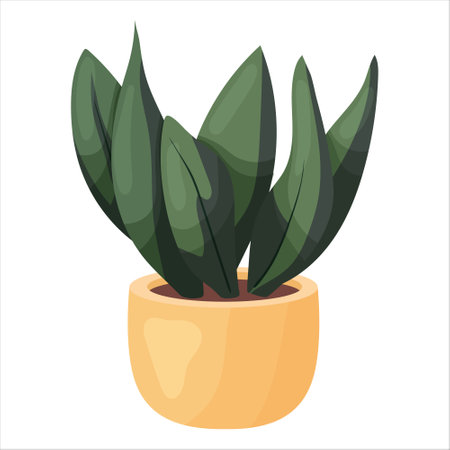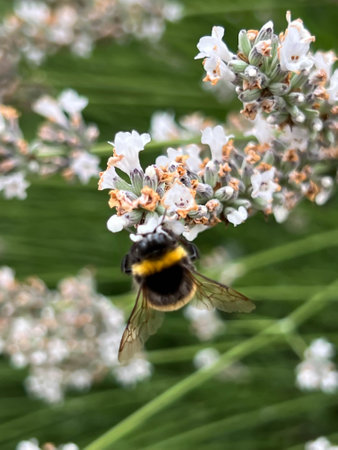Introduction to British Bees
Bees are much more than just familiar visitors to our gardens; they are essential contributors to the health and vitality of Britain’s natural landscapes. Across the UK, native bee species play a pivotal role in pollinating flowers, fruits, and vegetables, directly influencing both garden productivity and broader ecosystem stability. Understanding which bees are native to Britain is crucial—not only does this knowledge help gardeners support local biodiversity, but it also ensures that gardens remain resilient and vibrant throughout the seasons. By learning how to identify these remarkable insects, you can better appreciate their ecological importance and take informed steps to protect them within your own green spaces.
2. Honeybee (Apis mellifera): The Familiar Favourite
When most people in the UK think of bees, the honeybee (Apis mellifera) is likely the first to spring to mind. These industrious insects are not only a staple of British folklore and rural life, but they also play a crucial role in pollinating both wildflowers and many of our essential garden crops.
Description and Identification
The honeybee is relatively easy to spot due to its distinctive features. Typically, they have a slender, golden-brown body with black bands across their abdomen. Their wings are translucent, and they tend to be slightly smaller than some of the more robust bumblebees often seen in British gardens.
| Feature | Honeybee (Apis mellifera) |
|---|---|
| Size | Approx. 12-15mm long |
| Colour | Golden-brown with black stripes |
| Body Shape | Slender and less hairy compared to bumblebees |
| Flight Pattern | Straight and purposeful; often seen flying directly between flowers and hive |
Spotting Honeybees in Your Garden
Honeybees can usually be found buzzing around open blooms from early spring through late autumn. They favour gardens rich in nectar-producing flowers such as lavender, foxgloves, and fruit blossoms. If you notice a steady stream of bees travelling back and forth in your garden, its possible theres a hive nearby, either managed by a local beekeeper or in the wild.
Behaviour and Ecological Role
Unlike solitary bee species, honeybees live in highly organised colonies with thousands of workers supporting a single queen. This social structure allows them to efficiently pollinate large areas, making them invaluable allies for gardeners hoping to increase yields of apples, strawberries, runner beans, and more. In addition to their pollination services, honeybees produce honey and beeswax—products that have been cherished by Britons for centuries.
By learning how to identify honeybees and understanding their habits, gardeners can better appreciate these familiar favourites and create an environment where they can thrive.

3. Buff-tailed Bumblebee (Bombus terrestris): Britains Busiest Pollinator
Recognising the Buff-tailed Bumblebee in Your Garden
The buff-tailed bumblebee is one of the most widespread and easily recognisable bee species in Britain, often seen from early spring right through to autumn. Characterised by their robust size and distinct colouring, these bees have a fuzzy black body with two broad yellow bands—one across the thorax and another on the abdomen—and a pale, buff-coloured tail at the rear. Queens are noticeably larger than workers and can sometimes be mistaken for different species due to their more pronounced buff tails.
Key Identification Features
- Size: Queens are up to 24mm long; workers and males are smaller, around 16mm.
- Colouring: Black, with two yellow bands and a pale, creamy-buff tail (not pure white).
- Flight Pattern: A slow, purposeful flight, often low over flowerbeds or lawns.
Significance for British Gardens and Wild Spaces
The buff-tailed bumblebee plays a crucial role as a pollinator within both cultivated gardens and wild habitats across the UK. Their long tongues allow them to access nectar from deep flowers, making them vital for crops such as tomatoes, soft fruits, and many native wildflowers. Unlike honeybees, buff-tailed bumblebees can forage in cooler temperatures, meaning they are among the earliest bees active each year and provide essential pollination services when other insects are still dormant.
How to Support Buff-tailed Bumblebees in Your Garden
If you want to encourage these busy pollinators, plant early-flowering bulbs like crocuses and snowdrops, as well as late-summer blooms such as lavender and heather. Avoid using pesticides and leave some untidy corners or patches of long grass where queens can nest. By recognising and supporting the buff-tailed bumblebee, you help ensure the continued health of British flora—and enjoy a garden buzzing with activity throughout the season.
4. The Red Mason Bee (Osmia bicornis): Solitary Super Pollinator
The red mason bee is one of the UK’s most valuable native pollinators, thriving in gardens, allotments, and even urban spaces. Unlike honeybees or bumblebees, this species is solitary, meaning each female constructs her own nest rather than living in a large colony. Recognising and encouraging these bees can significantly boost your garden’s productivity and biodiversity.
Appearance: How to Identify the Red Mason Bee
| Feature | Description |
|---|---|
| Size | Approximately 8-10 mm (females slightly larger than males) |
| Colour | Rusty red-brown body with a black face; covered in fine hairs |
| Distinctive Markings | Males have pale moustache-like facial hair; females possess two small “horns” (bicornis) on their faces used for nest building |
Nesting Habits: Where to Find Them in Your Garden
Red mason bees favour pre-existing holes for nesting, such as hollow plant stems, old beetle holes in wood, or purpose-built bee hotels. Each female constructs a series of cells within these cavities, using mud to partition and seal each egg with its own pollen store. This behaviour often leads to clusters of nests in well-suited locations.
Typical Nesting Sites:
- Bee hotels or insect houses placed in sunny, sheltered spots
- Drilled holes in deadwood or wooden structures
- Cavities in mortar between bricks (hence the name “mason” bee)
- Hollow stems of plants like brambles or teasels
Role in Garden Productivity and Biodiversity
The red mason bee is an exceptional pollinator, particularly effective on fruit trees such as apples, pears, and cherries. Because they forage close to their nests and are active during spring when many garden plants flower, their presence can dramatically increase fruit set and crop yields. Unlike honeybees, mason bees are less likely to sting and are very gentle, making them ideal companions for family gardens.
Contribution Table: Why Gardeners Value Red Mason Bees
| Benefit | Description |
|---|---|
| Pollination Efficiency | Can pollinate up to 120 times more flowers per day compared to honeybees due to their foraging behaviour. |
| Pest-Free Nature | No risk of swarming or hive diseases; rarely stings humans or pets. |
| Biodiversity Support | Encourages healthy ecosystems by supporting flowering plants and fruit crops. |
| Easy to Attract | A simple bee hotel or drilled log can quickly attract nesting females each spring. |
If you spot these charming red-brown bees busily visiting blossoms or carrying mud pellets back to a cavity wall or bee hotel, you’ve found one of Britain’s most important solitary pollinators at work. By providing suitable nesting sites and planting a variety of spring flowers, you’ll help red mason bees thrive—and reap the rewards throughout your garden.
5. Common Carder Bee (Bombus pascuorum): The Ginger Forager
How to Recognise the Common Carder Bee
The Common Carder Bee is one of the most widespread and easily identified native bees in British gardens. Characterised by its warm, ginger-brown colouring, this bumblebee is notably different from its black-and-yellow striped relatives. Look for a furry, reddish-brown thorax and a similarly coloured, but slightly paler abdomen. Unlike some other bumblebees, the Common Carder lacks distinct black or white stripes, giving it a more uniform, tawny appearance.
Where and When to Spot Them
You are likely to encounter the Common Carder Bee from early spring through late autumn. They are particularly fond of open grassy areas, garden borders, and wildflower patches—making them a frequent visitor to both urban and rural gardens across the UK. Their nests are often built above ground within dense grass tussocks or under hedgerows.
Foraging Preferences
The Common Carder Bee is an industrious forager with a broad diet. It shows a marked preference for tubular flowers such as clover, dead-nettle, and comfrey, but will also visit a variety of native and cultivated blooms. Their long tongues enable them to access nectar that many other bees cannot reach, making them vital pollinators for certain plant species.
Behavioural Traits
These bees are generally non-aggressive and can often be seen busily moving from flower to flower in a methodical manner. They tend to hover low over lawns and flowerbeds while searching for nectar sources. Due to their gentle nature and preference for common garden plants, they play an essential role in supporting local biodiversity.
By learning to identify the Common Carder Bee, gardeners can better appreciate the diversity of native pollinators and encourage practices that support these valuable insects throughout the growing season.
6. Spotting and Supporting British Bees in Your Garden
Observing native British bees in your garden is both rewarding and essential for supporting local biodiversity. To safely watch these fascinating pollinators, remain calm and move slowly; bees are generally non-aggressive unless provoked. Use a notebook or camera to record the different species you spot, focusing on features like size, colour patterns, and behaviour around flowers. Avoid disturbing their nests or swatting at them, as this can stress the bees and disrupt their natural activity.
Creating a Bee-Friendly Garden
One of the most effective ways to attract and support native bee species is by planting a diverse range of nectar- and pollen-rich flowers. Opt for traditional British varieties such as foxgloves, lavender, comfrey, heather, and wild marjoram. Native wildflowers like knapweed, red clover, and bird’s-foot trefoil are particularly beneficial for solitary bees and bumblebees alike. Ensure blooms are available from early spring through autumn to provide a continuous food source.
Providing Habitats and Shelter
Beyond planting, create habitats by leaving some areas of your garden undisturbed or slightly overgrown—perfect for ground-nesting species like mining bees. Install bee hotels or nesting boxes in sunny spots to offer shelter for solitary bees. Piles of logs or patches of bare earth also serve as vital nesting sites.
Sustainable Gardening Practices
Avoid using pesticides or herbicides which can be harmful to bees and other pollinators. Instead, embrace organic gardening methods and encourage natural pest predators such as ladybirds. Regularly clean water sources like shallow dishes with stones so bees have safe places to drink without risk of drowning.
By combining careful observation with thoughtful planting and sustainable practices, you’ll transform your garden into a haven for Britain’s cherished native bee species—helping both your local ecosystem and the future of these vital pollinators.


